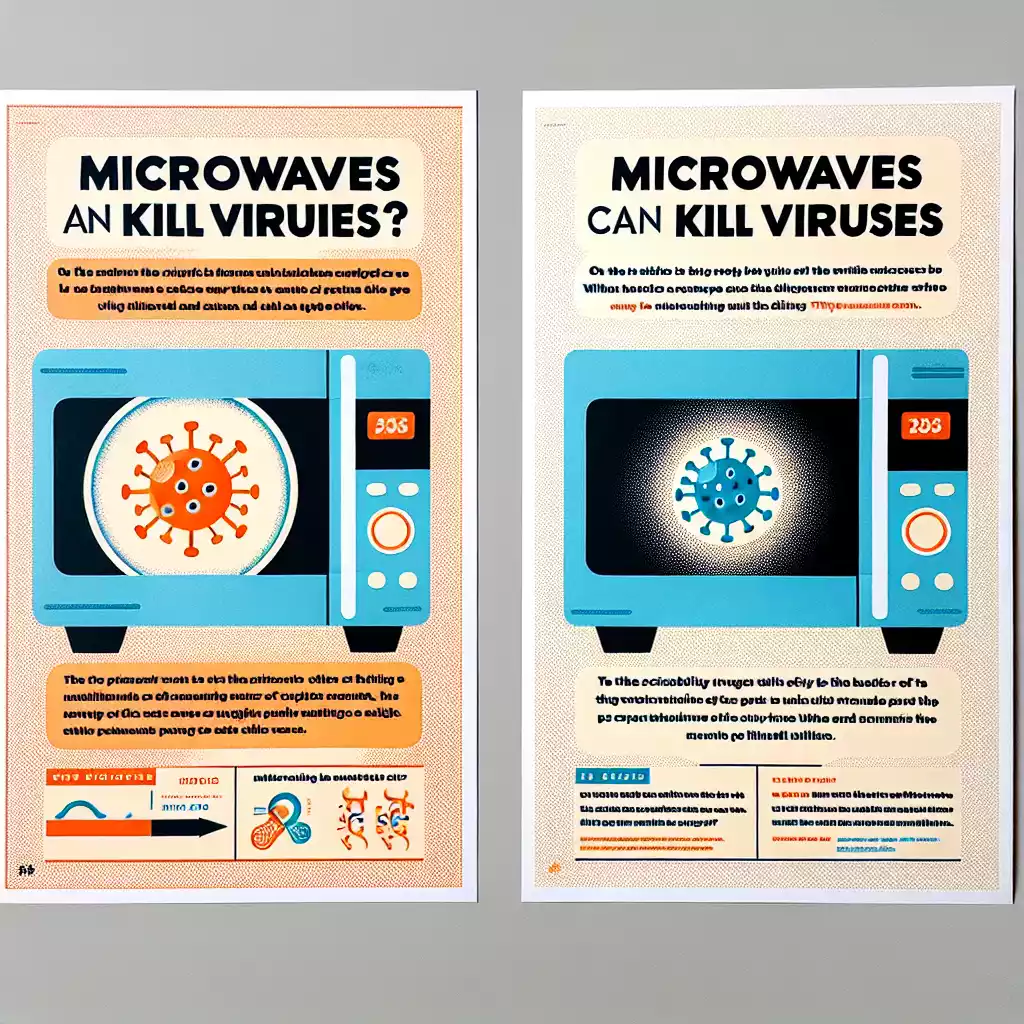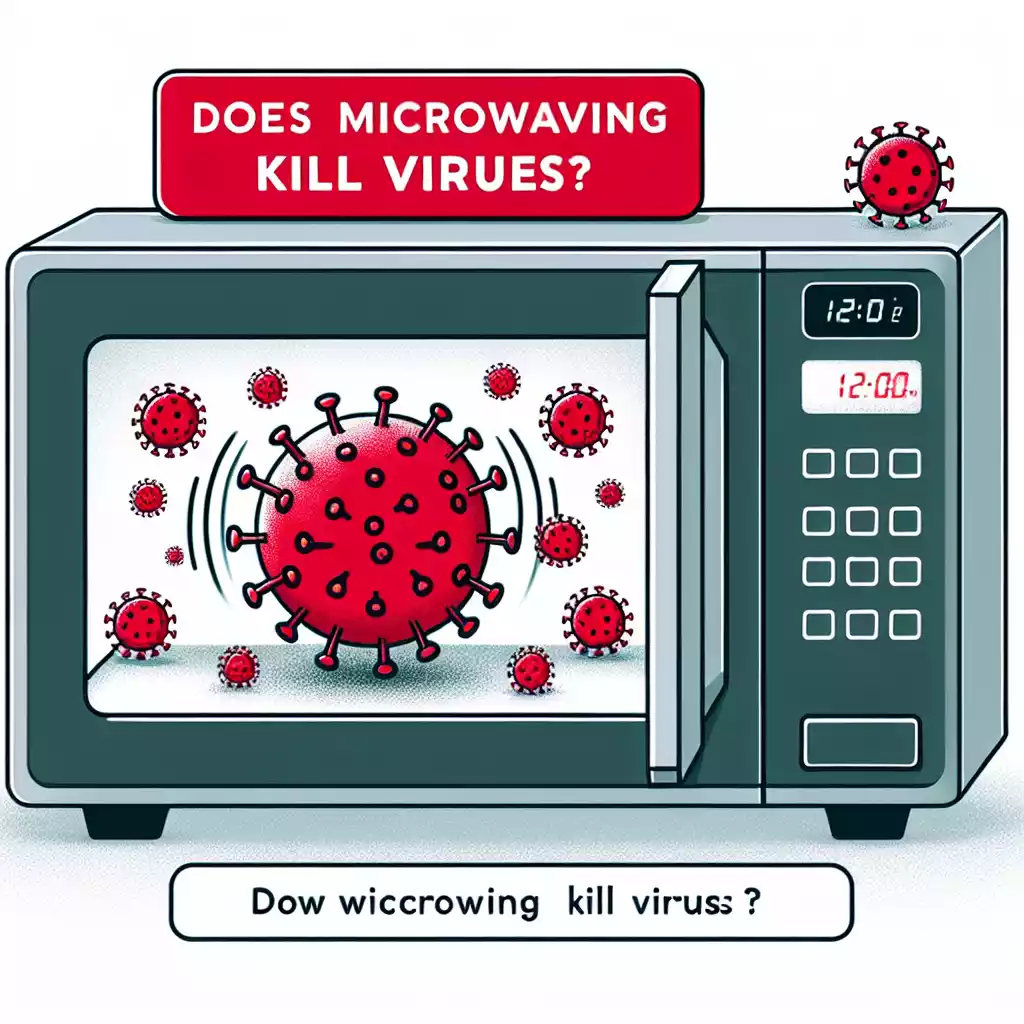Understanding How Microwaves Work
Basics of Microwave Technology
Microwaves have become a staple in many kitchens, but their technology often remains a mystery. Microwaves use electromagnetic waves to heat food. These waves penetrate the food, causing water molecules to vibrate rapidly, producing heat. This heat cooks the food from the inside out, making microwaves a quick and efficient cooking tool.
How Microwaves Generate Heat
The heat generation process in microwaves is fascinating. When the microwave oven is turned on, the magnetron (a component inside the microwave) converts electrical energy into microwave radiation. These microwaves bounce around inside the oven, hitting the food and causing water molecules to oscillate. This oscillation generates heat, which cooks or warms the food.
The Science Behind Virus Deactivation
Viruses and Their Structure
Viruses are tiny infectious agents that require a host to replicate. They consist of genetic material (DNA or RNA) enclosed in a protein coat. Some viruses also have an outer lipid envelope. Understanding the structure of viruses helps in determining how they can be deactivated or destroyed.
Factors Influencing Virus Deactivation
Several factors influence the deactivation of viruses, including temperature, humidity, and exposure to chemicals or radiation. High temperatures can denature the proteins and genetic material of viruses, rendering them inactive. Microwaves, by generating heat, could potentially decompose viral structures.
Microwaves and Their Effect on Viruses

Research on Microwaves and Virus Deactivation
Research on the effect of microwaves on viruses has shown mixed results. Some studies suggest that microwaves can effectively kill certain types of viruses, while others indicate limited efficacy. The effectiveness depends on the microwave’s power, the duration of exposure, and the nature of the virus. For instance, a study published in the Journal of Virological Methods found that microwaves could deactivate certain viruses in liquid mediums, but the results vary with different virus types.
Practical Applications in Virus Deactivation
Microwaves can be used to sterilize certain items, like kitchen sponges or small tools. However, using microwaves to deactivate viruses on surfaces or in food requires careful consideration. It’s crucial to ensure that the item is microwave-safe and that the heat generated is sufficient to kill the virus without damaging the item.
Safety and Efficacy of Using Microwaves
Safe Practices for Using Microwaves
Using microwaves safely is essential to avoid accidents and ensure effective virus deactivation. Here are some tips:
• Use microwave-safe containers: Avoid metal or foil, which can cause sparks.
• Follow manufacturer instructions: Each microwave has specific guidelines for safe use.
• Avoid overheating: Overheating can damage the microwave and potentially cause fires.
Efficacy of Microwaves in Killing Viruses on Different Surfaces
The efficacy of microwaves in killing viruses varies with different surfaces. Microwaves can effectively kill viruses on porous surfaces like sponges or cloths. However, non-porous surfaces like plastic or metal may not heat uniformly, reducing the effectiveness of virus deactivation.
Alternatives to Microwave Sterilization
Traditional Methods of Sterilization
Traditional sterilization methods include boiling, using disinfectants, and UV light exposure. Boiling is effective but not always practical for all items. Disinfectants can be harsh and may not be suitable for all surfaces. UV light is effective but requires special equipment.
Modern Alternatives to Microwave Sterilization
Modern alternatives include steam sterilizers and ozone generators. Steam sterilizers are effective for various items and are commonly used in healthcare settings. Ozone generators produce ozone gas, which can kill viruses and bacteria, but they require careful handling due to the potential health risks of ozone exposure.
Common Myths and Misconceptions
Debunking Common Myths
Several myths surround the use of microwaves for virus deactivation. One common myth is that microwaves can kill all viruses instantly. While microwaves can deactivate some viruses, the effectiveness depends on several factors, including the type of virus and the microwave’s power.
Understanding Misconceptions About Microwaves
Misconceptions about microwaves often stem from a lack of understanding of how they work. For example, some people believe that microwaves can cause food to become radioactive, which is not true. Microwaves use non-ionizing radiation, which does not have enough energy to ionize atoms or molecules and cause harm.
Practical Tips for Using Microwaves Safely
Best Practices for Microwave Use
To use microwaves safely and effectively:
• Follow the manufacturer’s instructions: Each microwave model has specific guidelines for safe use.
• Use microwave-safe containers: Avoid using metal or aluminum foil.
• Regularly clean the microwave: Food splatters can cause uneven heating and reduce the microwave’s efficiency.
Common Mistakes to Avoid
Common mistakes to avoid when using microwaves include:
• Overloading the microwave: This can lead to uneven heating and reduce effectiveness.
• Ignoring the microwave’s power settings: Different foods and items require different power levels for effective heating.
• Using inappropriate containers: Using non-microwave-safe containers can cause accidents and reduce effectiveness.
FAQs About Microwaves and Virus Deactivation
FAQ 1: Can microwaves kill all types of viruses?
Microwaves can deactivate some viruses, but not all. The effectiveness depends on the type of virus and the microwave’s power.
FAQ 2: How long should items be microwaved to ensure virus deactivation?
The duration depends on the item and the microwave’s power. Generally, microwaving for 1-2 minutes at high power can be effective for small items like sponges.
FAQ 3: Are there risks associated with using microwaves for virus deactivation?
Yes, there are risks, such as overheating and using inappropriate containers. Always follow the manufacturer’s instructions and use microwave-safe containers.
FAQ 4: Can microwaving food kill viruses present in it?
Microwaving food can kill some viruses, but the effectiveness depends on the food’s composition and the microwave’s power. Ensure the food is heated thoroughly.
FAQ 5: What are the limitations of using microwaves for virus deactivation?
Limitations include uneven heating, the potential for overheating, and the reduced effectiveness on non-porous surfaces.
Conclusion
In conclusion, microwaves can be effective in deactivating certain viruses under specific conditions. However, their efficacy depends on several factors, including the type of virus, the microwave’s power, and the item’s composition. Using microwaves safely and understanding their limitations is crucial for effective virus deactivation. Always follow best practices and consider alternative sterilization methods when appropriate.

